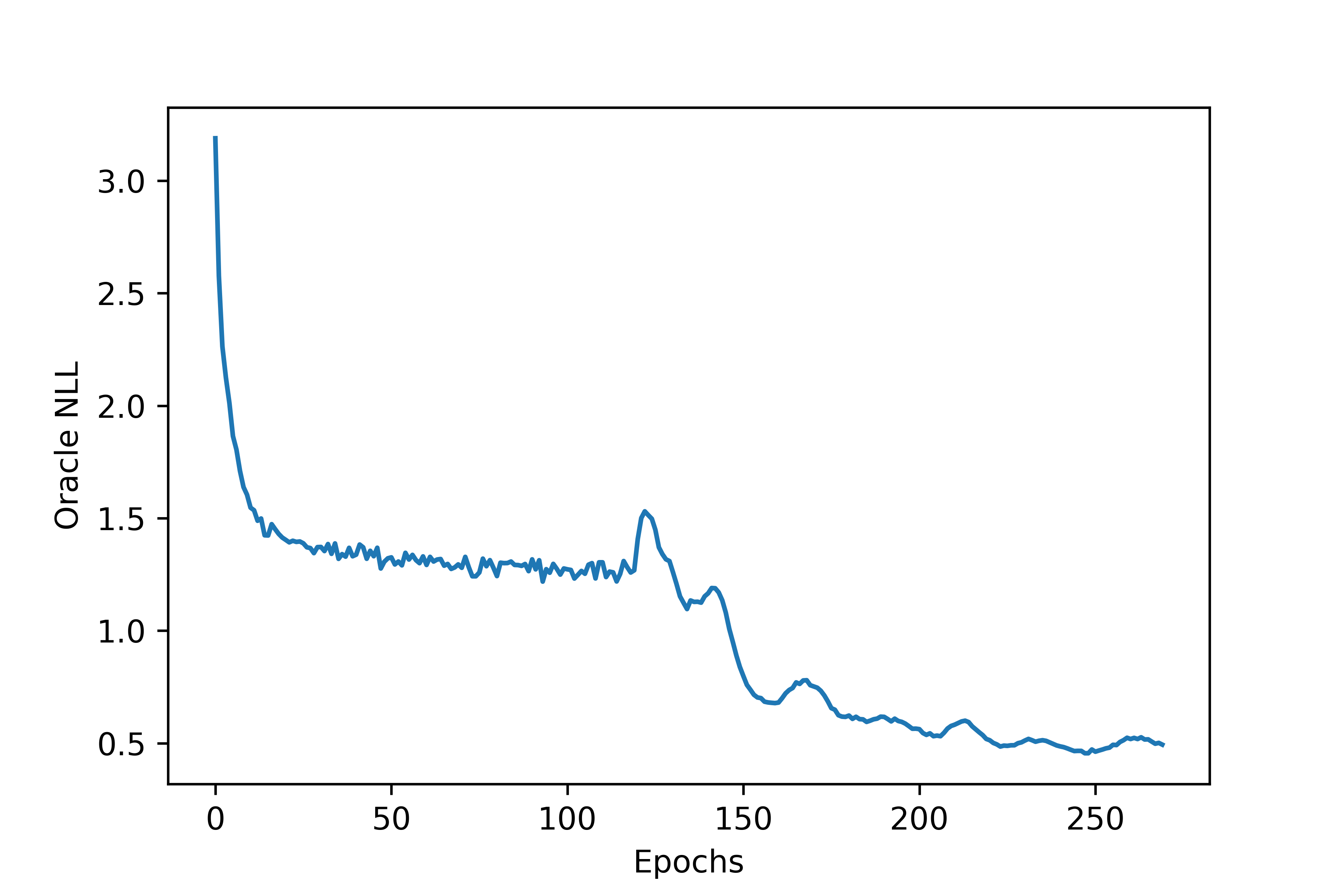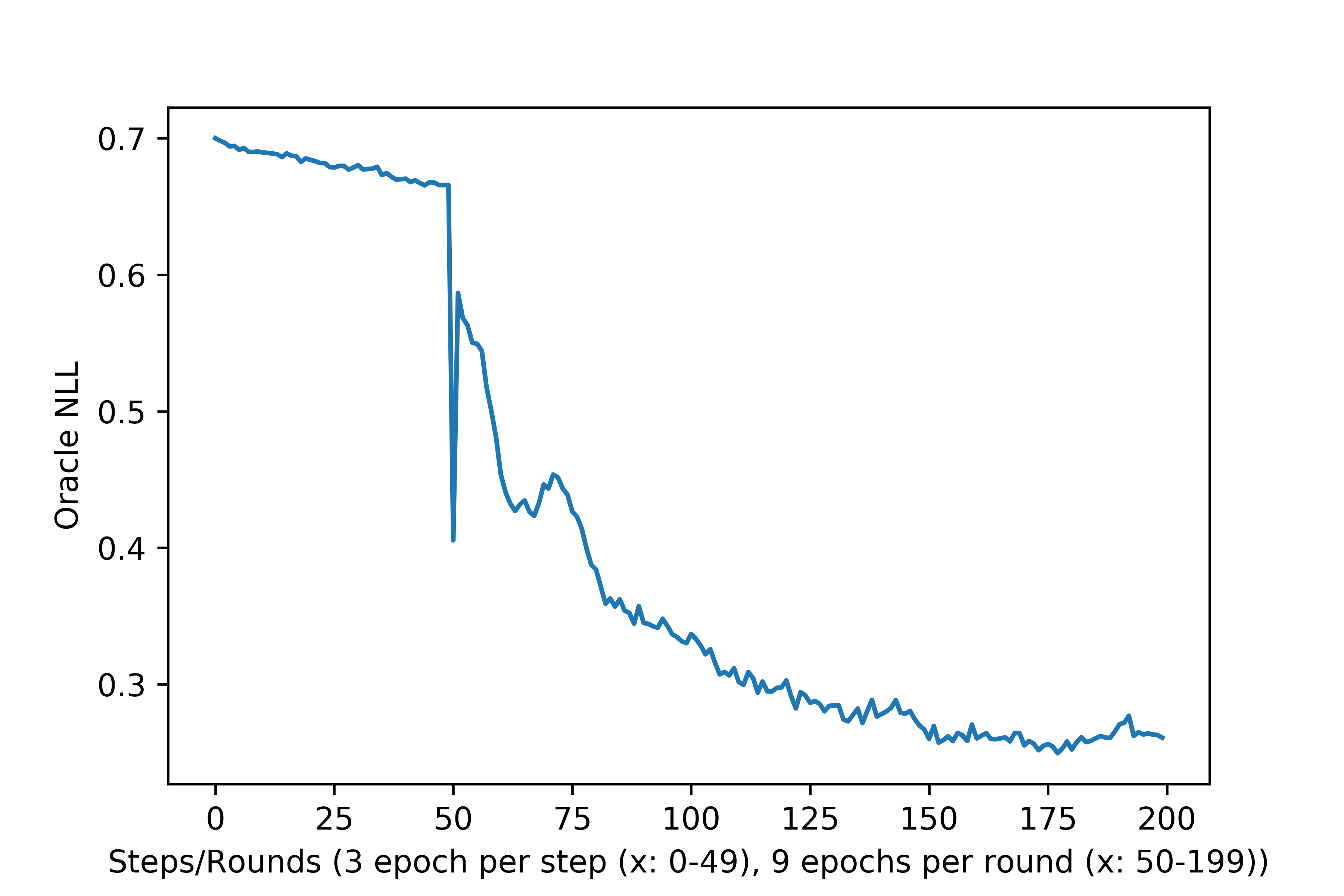SeqganA simplified PyTorch implementation of "SeqGAN: Sequence Generative Adversarial Nets with Policy Gradient." (Yu, Lantao, et al.)
Stars: ✭ 502 (+1155%)
Mutual labels: gan, policy-gradient
Pytorch RlThis repository contains model-free deep reinforcement learning algorithms implemented in Pytorch
Stars: ✭ 394 (+885%)
Mutual labels: gan, policy-gradient
ADL2019Applied Deep Learning (2019 Spring) @ NTU
Stars: ✭ 20 (-50%)
Mutual labels: gan, policy-gradient
Mlds2018springMachine Learning and having it Deep and Structured (MLDS) in 2018 spring
Stars: ✭ 124 (+210%)
Mutual labels: gan, policy-gradient
IrwGANOfficial pytorch implementation of the IrwGAN for unaligned image-to-image translation
Stars: ✭ 33 (-17.5%)
Mutual labels: gan
TRPO-TensorFlowTrust Region Policy Optimization (TRPO) in pure TensorFlow
Stars: ✭ 17 (-57.5%)
Mutual labels: policy-gradient
Deep-Reinforcement-Learning-CS285-PytorchSolutions of assignments of Deep Reinforcement Learning course presented by the University of California, Berkeley (CS285) in Pytorch framework
Stars: ✭ 104 (+160%)
Mutual labels: policy-gradient
HandyRLHandyRL is a handy and simple framework based on Python and PyTorch for distributed reinforcement learning that is applicable to your own environments.
Stars: ✭ 228 (+470%)
Mutual labels: policy-gradient
GANs-KerasGANs Implementations in Keras
Stars: ✭ 24 (-40%)
Mutual labels: gan
wgan-gpPytorch implementation of Wasserstein GANs with Gradient Penalty
Stars: ✭ 161 (+302.5%)
Mutual labels: gan
ZSL-ADACode accompanying the paper "A Generative Framework for Zero Shot Learning with Adversarial Domain Adaptation"
Stars: ✭ 18 (-55%)
Mutual labels: gan
scrabble-ganAdversarial Generation of Handwritten Text Images
Stars: ✭ 49 (+22.5%)
Mutual labels: gan
CoMoGANCoMoGAN: continuous model-guided image-to-image translation. CVPR 2021 oral.
Stars: ✭ 139 (+247.5%)
Mutual labels: gan
td-regTD-Regularized Actor-Critic Methods
Stars: ✭ 28 (-30%)
Mutual labels: policy-gradient
PerceptualGANPytorch implementation of Image Manipulation with Perceptual Discriminators paper
Stars: ✭ 119 (+197.5%)
Mutual labels: gan
Reinforcement LearningDeep Reinforcement Learning Algorithms implemented with Tensorflow 2.3
Stars: ✭ 61 (+52.5%)
Mutual labels: policy-gradient
Paddle-RLBooksPaddle-RLBooks is a reinforcement learning code study guide based on pure PaddlePaddle.
Stars: ✭ 113 (+182.5%)
Mutual labels: policy-gradient
Deep-rl-mxnetMxnet implementation of Deep Reinforcement Learning papers, such as DQN, PG, DDPG, PPO
Stars: ✭ 26 (-35%)
Mutual labels: policy-gradient
pix2pix-tensorflowA minimal tensorflow implementation of pix2pix (Image-to-Image Translation with Conditional Adversarial Nets - https://phillipi.github.io/pix2pix/).
Stars: ✭ 22 (-45%)
Mutual labels: gan


